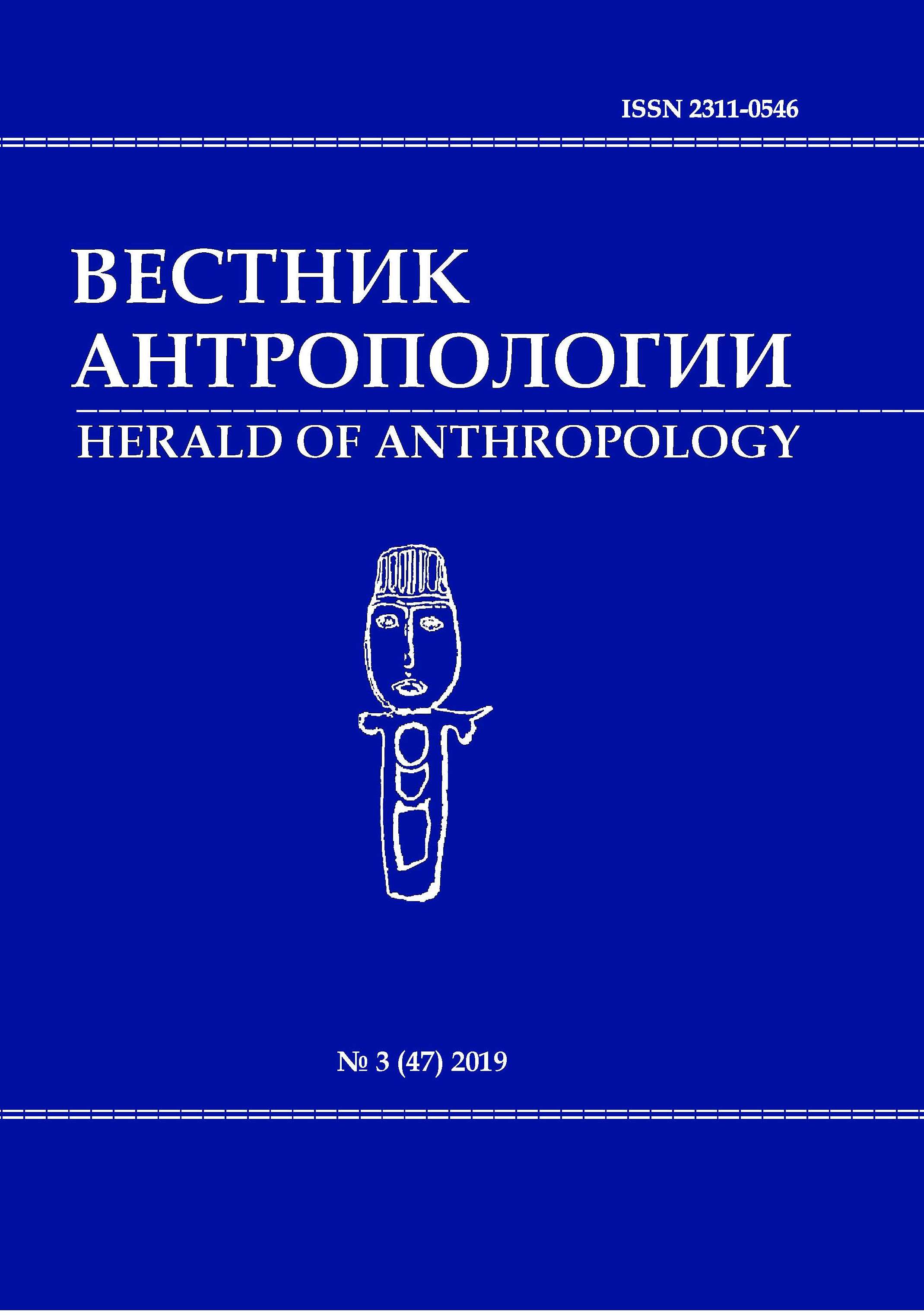Person Perception, Attractiveness, and Assessment of Men with Tendency to Take Risks: Evolutionary Aspects
DOI: 10.33876/2311-0546/2019-47-3/107-122
Keywords:
men, risk-taking behavior, aggression, perception, attractiveness, competitiveness, mate choiceAbstract
The male behavioural strategy associated with physical risk is one of the universal foundations on which the ideas of masculinity established in society are based. Risk-taking propensity in general can signal a man's greater competitiveness, and physically risky actions can be perceived as "courageous" behavior and evidence of strength and athleticism. The results of a number of experimental studies and observations recorded sexual differences in risky behavior. In particular, young men are more likely to take physical risks than women. Evolutionary scientists have suggested that these differences may be a result of male competition for access to sexual partners. In this study we present an analysis of male and female physical risk assessments of men in the Russian sample (n = 701). Men and women were offered vignettes describing men who differed in risk-taking propensity. Respondents needed to assess the attractiveness of men in the context of long-term romantic and short-term (so-called "one night stand") relationships, as well as to assess their competitiveness, tendency to aggression, provisioning quality and a tendency to dangerous health behavior (alcohol abuse, unprotected sex, etc.). The degree of risk tolerance was significant in the evaluation of all the proposed parameters. Men who demonstrate an average degree of risk-taking propensity received the highest ratings for attractiveness for short-term relationships. Low-risk men were found to be more attractive in long-term relationships and able to provide the best quality of life. Men who choose a type of activity associated with constant physical risk and danger were assessed as the most aggressive and competitive. In addition, high risk propensity was associated with a higher propensity for unhealthy lifestyles and bad habits. Thus, male risk-taking behaviour affects men's social perception, attractiveness and quality assessment, and a high degree of risk-taking is not always perceived as a positive quality.
References
- Apal’kova, Yu.I., M.L. Butovskaya, and N.K. Bronnikova. 2018. Ustoichivye sochetaniya morfofunktsional’nykh i lichnostnykh kharakteristik u muzhchin vysokoriskovykh professii [Stable combination of morphological, functional and personal characteristics of the men with high-risk professions]. Vestnik Moskovskogo universiteta. Seriya XXIII Antropologiya 4: 67–76. DOI: 10.32521/2074-8132.2018.4.067-076.
- Apal’kova, Yu.I., M.L. Butovskaya, and Yu.N. Fedenok. 2017. 2D:4D, samootsenki po agressii, sklonnosti k risku i chertam lichnosti u parashyutistov [2D:4D, jumpers’ self-esteem on aggression, propensity for risk taking and personality traits]. Vestnik Moskovskogo universiteta. Seriya XXIII Antropologiya 2: 54–60.
- Butovskaya, M.L., and O.V. Smirnov. 2003. Gendernye razlichiya v vybore postoyannogo polovogo partnera v srede sovremennogo moskovskogo studenchestva kak otrazhenie reproduktivnykh strategii cheloveka [Gender differences in the choice of a permanent sexual partner among modern Moscow students as a reflection of human reproductive strategies]. Etnograficheskoe obozrenie 1: 141–163.
- Butovskaya, M.L., and V.N. Burkova. 2011. Sotsial’nyi status i reproduktivnyi uspekh muzhchin v egalitarnom obshchestve khadza – okhotnikov-sobiratelei severnoi Tanzanii [Men social status and reproductive success in the egalitarian society of Hadza, the hunters and gatherers of Northern Tanzania]. In Antropologiya sotsial’nykh peremen, edited by E. Guchinova and G. Komarova, 365–386. Moscow: Rossiiskaya politicheskaya entsiklopediya (ROSSPEN).
- Davydov, A.V. 2007. Issledovanie lichnostnykh osobennostei podrostkov, imeyushchikh ustanovku na upotreblenie alkogolya [Study of personal characteristics of adolescents with a focus on alcohol consumption]. Yaroslavskii pedagogicheskii vestnik 2: 55–57.
- Ilyin, E.P. 2003. Differentsial’naya psikhofiziologiya muzhchiny i zhenshchiny [Differential psychophysiology of men and women]. St. Petersburg.
- Ilyin, E.P. 2012. Psikhologiya riska [Psychology of risk]. St. Petersburg: Piter.
- Khalikova, V.R. 2007. Ekstremaly goroda [Extremals of the city]. In Muzhskoi sbornik [Men’s collection]. Issue 3, edited by I.A. Morozov and N.L. Pushkareva, 244–259. Moscow: Indrik.
- Kon, I.S. 2008. Muzhskaya rol’ i gendernyi poryadok [Male role and gender order]. Vesnik obshchestvennogo mneniya 2 (March–April): 37–43.
- Kon, I.S. 2009. Mal’chik – otets muzhchiny [The boy is a father of the man]. Moscow: Vremya.
- Kon, I.S. 2010. Maskulinnost’ v menyayushchemsya mire [Masculinity in a changing world]. Voprosy filosofii 5. 25–35.
- Kovalevskii, D.V. 2011. Ideologiya maskulinnosti kak prichina sprosa na prostitutsionnye uslugi v sovremennoi Rossii [Ideology of masculinity as the reason of demand for sexual services in modern Russia]. Vektor nauki TGU 2 (16): 358–365.
- Mitina, O.V., A. Kaspert, and N.A. Nizovskikh. 2003. Ideologiya maskulinnosti v Rossii: postanovka problemy i eksperimental’noe issledovanie [Ideology of masculinity in Russia: problem statement and experimental research]. Obshchestvennye nauki i sovremennost’ 2: 164–176.
- Morozov, I.A. 2007. “Muzhskaya ekstremal’nost’” kak povod k razmyshleniyu o “sushchnosti muzhskogo” [“Male extremity” as a reason to think about the “essence of the male”]. In Muzhskoi sbornik [Men’s collection]. Issue 3, edited by I.A. Morozov and N.L. Pushkareva, 5–10. Moscow: Indrik.
- Puzanova, Zh.V., and A.G. Tertyshnikova. 2015. Metod vin’etok v sotsiologicheskikh issledovaniyakh: metodologicheskie printsipy i metodicheskie resheniya [Vignette method in sociological research: methodological principles and methodological solutions]. Vestnik RUDN. Seriya: Sotsiologiya 4: 44–57.
- Tuluzakova, M.V. 2009. Sotsiokul’turnye obraztsy feminnogo i maskulinnogo i problema gendernogo ravenstva [Socio-cultural patterns of feminine and masculine and an issue of gender equality]. Vestnik TGEU 4: 105–118.
- Zharkov, G.V. 2007. Riskovannost’ muzhestvennosti: rol’ gendernykh faktorov v formirovanii povedencheskogo riska u molodezhi [Riskiness of masculinity: the role of gender factors in the formation of young people’s behavioral risk]. In Muzhskoi sbornik [Men’s collection]. Issue 3, edited by I.A. Morozov and N.L. Pushkareva, 62–66. Moscow: Indrik.





















